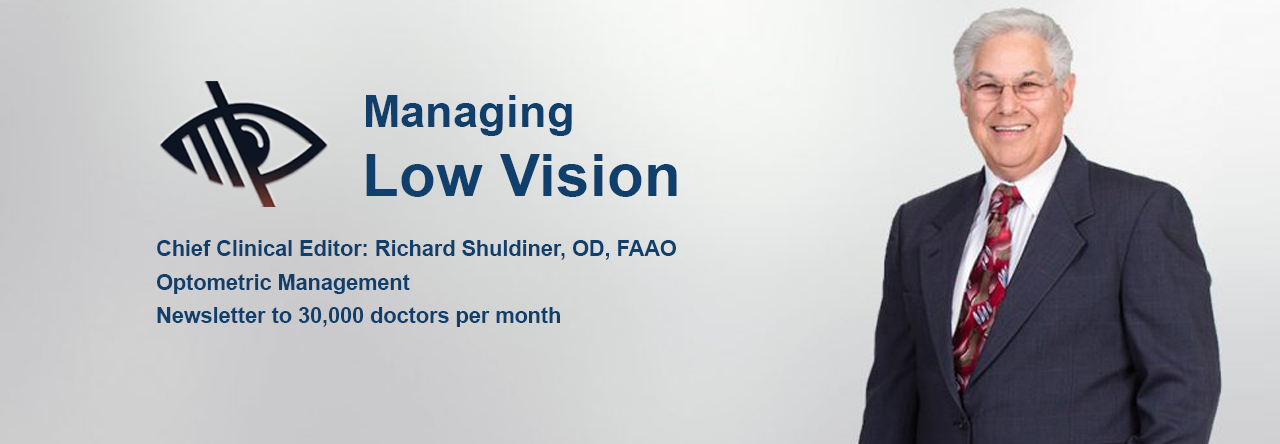Chief Clinical Editor: Richard Shuldiner, OD, FAAO & Guest Writer: Jarrod Long, OD
When is your patient ready for a low vision referral? The simple answer is: when you are about to say, “Nothing more can be done!” The more complex answer is: when your patient has functional complaints. Low vision care is about “doing”. It’s about helping the patient do what they are having trouble doing. So, when the patient complains, and you can’t help them with:
- Reading
- Writing
- Recognizing Faces
- Seeing labels in the grocery
- Driving
- Watching TV
- Working on their computer
- Doing handwork or any other visually-related tasks
This is when you know it’s time for a referral for low vision care. Either suggests a specific clinic or low vision doctor or simply say “Google search: low vision” and allow the patient to do the research. Before referring, we suggest two things:
- The medical eye conditions should be properly managed to the fullest extent.
- Careful refraction resulting in the best visual acuity should be achieved.
So, how do you determine who, and more specifically when, your patient is ready to be referred? If you’re expecting an answer like “20/some number”, there isn’t one. The “when to refer” question should not be answered based on a particular Snellen level of acuity. The problem with Snellen acuity, as we all know, is that it is only a measure of high contrast vision and it does not take into account low contrast, glare, scotomas, binocularity, eccentric viewing, and much more – let alone the patient’s needs and lifestyle! Of course, it’s an important measurement, but it’s only one of many.
Let me explain and give a suggestion for one simple question you can ask yourself and one you can ask the patient to make your decision easier and most timely.
Referring for low vision care starts with you, and what you are listening for, during a patient encounter. So, ask yourself: “Am I listening for functional vision complaints or ONLY medical eye health problems?” I know you are already “listening to” what the test results are telling you. And yes, we must “hear” what the test results tell us to properly diagnose, treat, and refer for medical eye care. But, to help our patients we must also hear what the patient actually tells us about their functional vision. So, to get that information, simply ask your patient: “Are you having difficulty seeing anything that is important or meaningful for you to do?” Phrase it how you like, but it must have the “to do” part because that speaks to function which is at the heart of answering this question of “when?” Even with vision as good as 20/30, your patient may surprise you with functional complaints.
Most of us have heard or used the term “20/Happy.” This refers to patients who have less than perfect Snellen acuity, but have no functional complaints – they’re satisfied with their vision. I suggest, with the use of a simple question or two, you can find out if your patient is “20/UNHappy.” If so, refer them to a low vision clinic or suggest that they perform a Google search to find one.
Lastly, please don’t say: “Nothing more can be done.”


